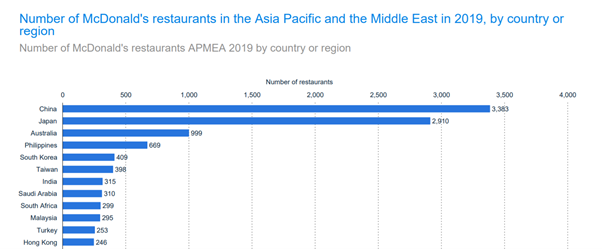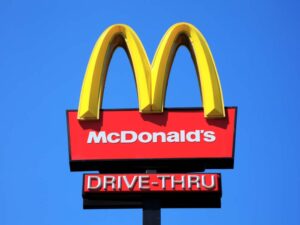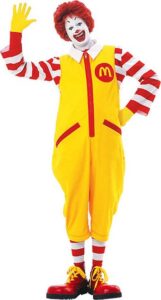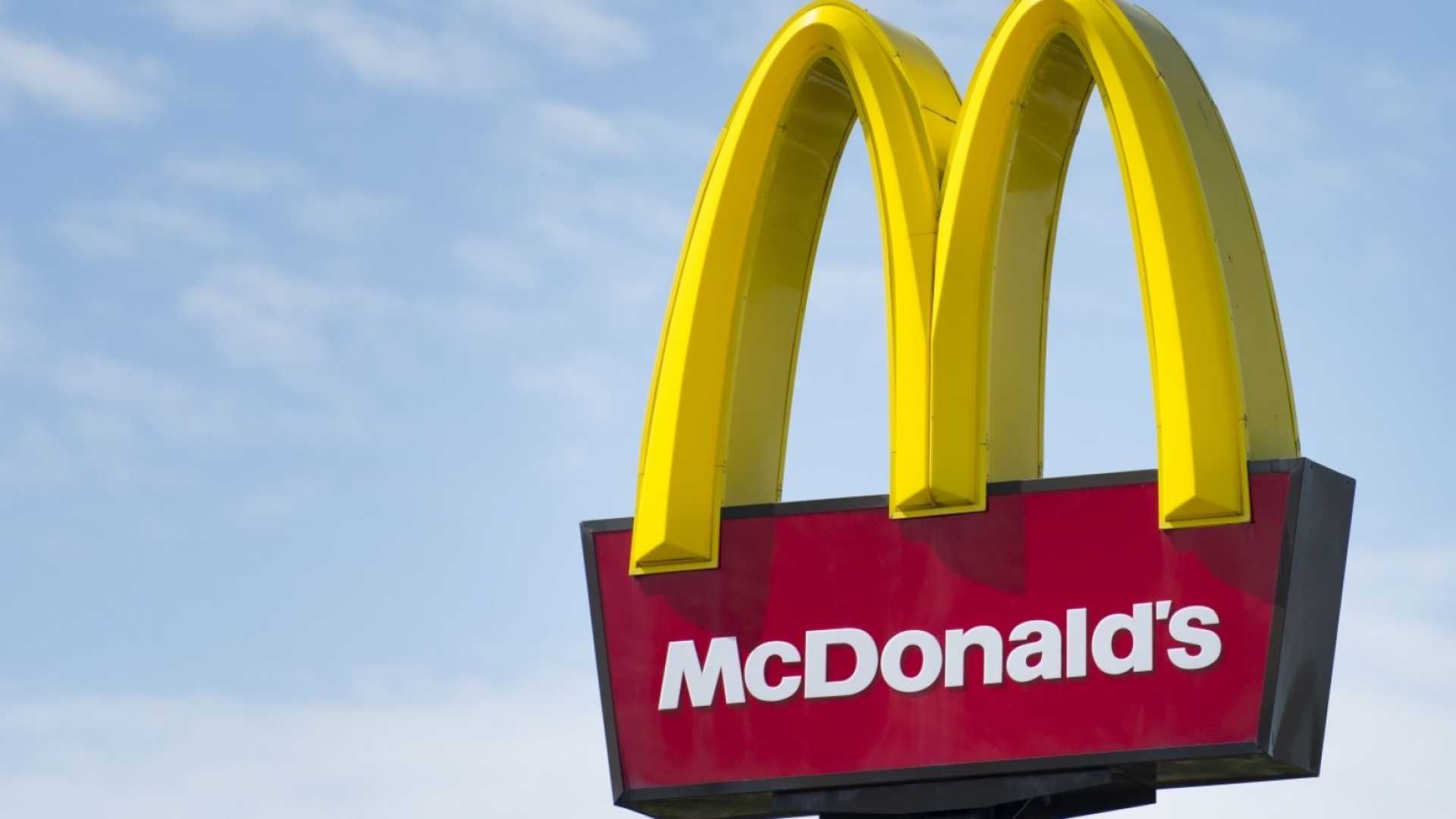“I’m Lovin’ It” – for many people across the world, these three words are emotions. Such is the craze of McDonald’s across the globe. An American fast-food company in California, McDonald’s was incepted by Richard and Maurice McDonald in the year 1940. Having started its journey with Hamburger, currently, its fast-food product portfolio has diversified itself into sandwiches, burgers, french fries, Ice-cream, coffee, soft drinks, and many more.
The company has a presence in 119 countries while it is serving 69 million customers daily. McDonald’s is the second-largest fast-food company by revenue (US$21.076 billion) and it is only behind Starbucks with a total revenue of US$26.50 billion. The total number of McDonald’s employees worldwide is over 205,000 and the company is famous for making burgers in 2-3 mins only. It is also credited with the invention of the drive-thru restaurant concept.
Currently, McDonald is the second-largest restaurant chain in the world after Subway with a total of 38,695 outlets in the world. The USA alone has around 13,846 McDonald’s restaurants followed by China (3383) and Japan (2910).

History
McDonald’s brother started the first restaurant in the year 1948 by converting their drive-through barbecue restaurant into a burger and milkshake venture. They used to sell their products at approximately half the price of their competitors and instead of relying on waiters, they had installed a self-service counter. They prepared the burgers in advance and kept them warm using high powered heat lamps which provided McDonald’s an edge over their competitors.
Later, Ray Kroc, an appliance seller bought the right to franchise McDonald restaurants across the country. Also, in the year 1955 Kroc opens his first franchised restaurant in Illinois. Ray Kroc and Harry Sonnenborn had developed a financial model in which McDonald owns the land on which its franchisees build their restaurants and this model is still existing.
Sonnenborn is known as the first CEO of that company and by 1961, they bought out McDonald’s brothers for 2.6 Million US dollars. The company had launched its most recognizable logo, the Golden arches, and mascot Ronald McDonald in the year 1963. Ronald ranks second in terms of the most recognizable fictional character after Santa Claus among U.S. school children. These brand identities proved to be a great success for the company because of their appeal and the McDonald chain continued to expand domestically and internationally.


Quick service restaurant(QSR) industry and McDonald’s
The global fast food and QSR market size were valued at USD 257.19 billion in 2019 which is greater than the economies of many countries and is expected to continue growing at a compound annual growth rate of 5.1% from the year 2020 to 2027. McDonald’s has sold over 100 billion burgers till now which is approximately 13 times of current world population.
With a brand value of about $129.3 billion, McDonald’s is currently the world’s most valuable fast-food brand followed by Starbucks (47.8 billion U.S dollars). Also, it has more than 38 thousand outlets worldwide and stands second only after Subway. It is the leading QSR chains in the United States in terms of systemwide sales with $40.41 billion.

When the QSR industry is compared to full-service restaurants, it is found that nowadays consumers are preferring QSR as they provide quality food at affordable prices and at a great speed.
McDonald’s in India
McDonald’s had entered the Indian Market in the year 1993 post LPG reform by the Indian Government. They had used a Joint venture strategy to enter the market and formed a 50-50 alliance with Vikram Bakshi and Amit Jatia. Vikram was responsible to run North and East India and Amit were responsible for the West and South parts of India.
They opened their first store at Basant Lok, New Delhi in the year 1996. Currently, McDonald’s had around 315 restaurants in India and INR 14.01 billion in revenue in the year 2019.
McDonald’s had to invest a lot of funds as the average Indian had limited purchasing power. When Cint conducted a survey, it was found that 34.52 percent of respondents in India eat fast food less than once per week and 38 percent eat one to three times per week as of 2018.
Also, McDonald’s had to customize their menu according to the taste of Indian consumers as a large chunk of consumers falls into the vegetarian food category. To target these customers, the company came up with a completely new line of vegetarian items that includes McAloo Tikki and McVeggie Burger.
When it comes to the Indian market, McDonald’s doesn’t serve beef products in contrast to the USA market where they are famous for beef burgers.McDonald’s had launched home delivery of the meals in the year 2004.
Also Read: Domino’s Pizza – From Just Selling Pizzas To Reinventing Itself As A Brand
How McDonald’s finds customers?
Demographic Segmentation: It uses this segmentation strategy with age as a crucial factor and they target children, youth (ages between 18-29 years), and young urban families. They offered a lot of toys, goodies, and came up with the idea of a happy meal to attract children.
In fact, it is the largest distributor of toys in the world. Around 20% of all sales at McDonald’s include a toy, with one being passed out with each Happy Meal the company sells. They generate a large chunk of revenue through young adults’ segments, including people between the age of 18 to 29 years as McDonald’s provides them a great facility to celebrate major events at an affordable cost. Consumers in India are highly family-oriented, so McDonald’s has kept that in mind and come up with various meals and other alluring offers for them.
Regional offerings: It optimizes its menu and offerings according to the regional tastes of various geographies. Examples include Veg Burger(McAloo Tikki, Maharaja Mac, etc.) in India, McArabia Chicken and beef burgers in Arabian countries, etc.
Location of outlets: McDonald’s spends a lot of time analyzing the places where they can start the operations to add value to their revenues. Generally, they target urban places, malls, airports, metro, cinema halls, etc as average footfalls are higher in these areas. They also target children by providing toys along with meals, families by providing proper meals and ambiance, and teenagers by providing them with an appropriate space to hang out at an affordable price.
Financial as of 2019
| Revenue(billion U.S. dollars) | Revenue(billion U.S. dollars) from Company-operated restaurants | Revenue(billion U.S. dollars) from Franchised restaurants | Operating Income(billion U.S. dollars) | Net Income(billion U.S. dollars) | Total Assets(billion U.S. dollars) |
| 21.08 | 9.42 | 11.66 | 9.07 | 6.03 | 47.51 |
Types of restaurants
Most of the McDonald’s restaurants provide both counter service and Drive-Thru with indoor or outdoor seating. McDrive is generally located near the highway and doesn’t offer counter service. McCafé on the other hand is there to cater to the demand for the Café-style concept.
McDonald’s came up with the concept of “Create your Taste” in the year 2015 where customers could choose the ingredients, including the type of bun and meat along with optional extras. To attract CMcDonald’s provide McDonald’s PlayPlace featuring large outdoor or indoor playgrounds.
McDonald’s has recently acquired Apprente that uses AI to understand speech and they will leverage the technology in their Drive-thru and in self-order kiosks and mobile apps.
Controversies
McDonald’s is not clean as the company was indulged in court cases, nutritional controversies, outright lies, labor atrocities, and other disagreements. These are some of them:-
- Recently in 2019, McDonald’s has faced a boycott in India as the right-wing section of society sued them for their statement in which they had reported that the company served Halal meat.
- Zero hour controversy: In 2014, it was revealed that a franchise in Pennsylvania had been committing a litany of abuses against zero-hour guest workers who had been working for the corporation on a foreign exchange work program.
These workers were subjected to twenty-five hours of shifts without getting any overtime pay. Eventually, the workers went on for strike and despite the franchisee’s insistence, he had done nothing wrong, and drew attention and support both from within the United States and outside of it. A suit levied against him finally resulted in McDonald’s paying hundreds of thousands of dollars in damages and payback to 291 workers.
- China Scandal: In the year 2014, it was revealed that the company had been serving tainted meat in its restaurants across China. A film showed workers at a food processing plant handling the food bare handly, repackaging expired foods, and returning the flesh, which falls on the floor into their machinery. This resulted in a drastic decrease in sales in China and other countries like Hong Kong and Japan.
- Virginia Racism Debacle: In the year 2015 ten ex-employees of McDonald’s in Virginia filed a civil rights suit against the company and accused them of racism. According to the employees, they had been fired after supervisors suggested too many black people in the store. In 2014, 15 African-American employees had been fired, while those same supervisors had hired several white employees only a few months earlier. These incidents had hampered the sales of the company drastically in various parts of the country.
McDonald’s corporate vision is “to move with velocity to drive profitable growth and become an even better McDonald’s serving more customers delicious food each day around the world.” and they have been able to live the vision with their continuous efforts and innovations. They aim to open their outlets at locations where they are still not available and improve overall operational efficiency to enhance the profit margins. Their generic competitive strategy and intensive growth strategies supported their growth and expansion objectives embodied in the corporate vision statement.



